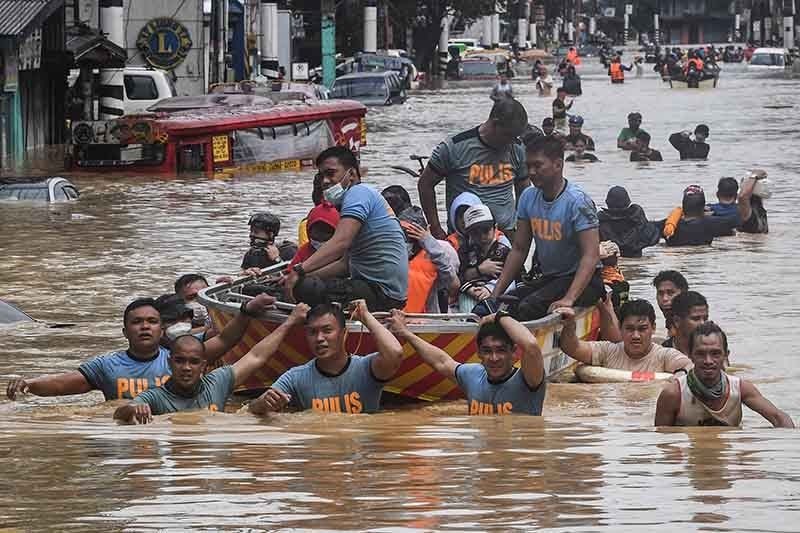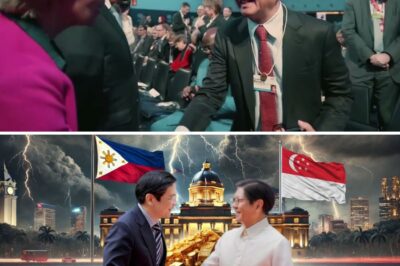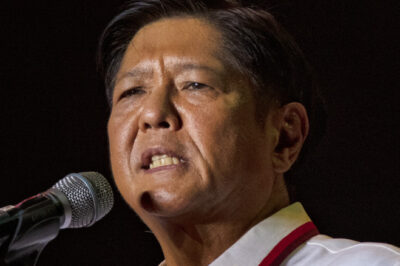
A seismic wave of scandal has crashed upon the Philippine Senate, exposing a fresh and horrifying dimension of systemic corruption that has left seasoned lawmakers reeling. What were once optimistically dubbed “farm-to-market roads”—vital arteries meant to connect rural producers to the national economy—have been grotesquely rebranded as “farm-to-pocket roads” after a staggering PHP10.3 billion overpricing scheme was laid bare. This is not merely an accounting discrepancy; it is a brutal embezzlement that drains the public coffers, strangles rural development, and fundamentally erodes the trust between the government and its people. As the truth unravels, the entire justice system finds itself under an intense spotlight, with whispers of political maneuvering and attempts to silence key witnesses further intensifying the drama.
The recent Senate hearing, ostensibly convened to scrutinize the budget of the Department of Agriculture (DA), quickly veered into an unforeseen and explosive investigation. Armed with meticulous documentation and hard figures, a senator meticulously unraveled a jaw-dropping operation of systematic overpricing that defied belief. The initial line of questioning was deceptively simple: could the DA directly implement Farm-to-Market Road (FMR) projects? The Secretary of Agriculture’s candid, yet deeply unsettling, admission spoke volumes. “So we are capable,” he conceded, “but in view of the scandals that are happening, I would rather not have it under the DA.” This was a chilling testament to an agency’s profound fear of being consumed by the very corruption it was designed to combat.
It was at this point that Senator Sherwin Gatchalian, armed with a damning array of evidence, laid bare the shocking scale of the deception. He established a benchmark: was PHP15,000 per meter, or approximately PHP5 million per kilometer, for a cemented road considered overpriced? The Secretary’s unequivocal “Ah, yes, Mr. Chair,” opened the floodgates to a torrent of damning revelations. Using this benchmark as a measuring stick, the senator systematically presented a list of projects that were not just overpriced, but “extremely, extremely, extremely overpriced.”
Consider the figures that sent gasps through the hearing room: A project in Tacloban City was priced at PHP348,000 per meter—over 20 times the benchmark. Another in Camarines Sur came in at PHP263,000 per meter, nearly 17 times higher. Even a project in Mayan City, at PHP193,000 per meter, was almost 13 times the standard. These numbers, displayed starkly on screens, were more than just statistics; they were an indictment of rampant greed, a blatant disregard for public funds, and a horrifying testament to a system seemingly out of control. Even the Secretary of Agriculture, visibly stunned, could only manage a bewildered, “medyo shocking.” The PHP15,000 per meter benchmark, which initially seemed high, suddenly paled in comparison to the actual project costs.
The burning question—how could such flagrant deception occur under everyone’s nose?—unlocked an even more alarming truth. The Secretary admitted that long before the widespread flood control project scandals erupted, the DA had been deluged with reports of questionable FMR projects: projects with dubious pricing, shoddy quality, or, in some horrifying instances, projects that simply vanished into thin air. But the most shocking revelation was this: for these obscenely overpriced projects, the Department of Agriculture itself had not given its official concurrence or approval.

This was a crushing admission. If the very agency responsible for utilizing these roads—the DA, with its intimate knowledge of where roads were genuinely needed—had withheld its consent, how had these projects proceeded? A senator pressed the Secretary, asking if they had been bypassed. The quiet, yet unambiguous, “Ah, yes, Mr. Chair,” confirmed a familiar modus operandi. The very same systemic bypass, the identical strategic avoidance of proper process observed in the flood control scams, had been meticulously applied to the farm-to-market roads. Projects that should have undergone rigorous scrutiny by the DA were directly funded and implemented, effectively circumventing oversight and burying the anomalies deeper within the bureaucratic labyrinth.
The investigation didn’t stop there. The senator pinpointed specific regions that appeared to be hotbeds of this overpricing: Region 5 (Bicol) and Region 8 (Eastern Visayas), where cost overshoots spiraled into billions of pesos. The spotlight then turned to the contractors. One contractor, prominently featured on the list, reportedly had connections to a well-known official from the House of Representatives, originating from Region 5, according to earlier reports. “I don’t think that’s coincidental,” the senator stated, the connection between the location of the overpricing, the winning contractor, and a powerful legislator forming an increasingly sinister puzzle.
Adding another layer to this deepening crisis, the specter of “ghost projects”—projects that exist only on paper—resurfaced. The Secretary of Agriculture confessed that their preliminary audit had already uncovered such phantom initiatives in Davao Occidental and Zamboanga City, dating back to 2021 and 2022. This confirmed a grim reality: corruption wasn’t a new phenomenon but a virulent cancer that had metastasized within the government over many years.
The senator concluded his exposé with a brutal summation: in just two years (2023 and 2024), the total overpricing for farm-to-market roads had reached a mind-boggling PHP10.3 billion. To bring this abstract figure into stark human terms, he explained its true cost: “So, the money lost to corruption could have been used to build a road from Manila all the way to Aparri.” This vision of a unified Luzon, a symbol of progress and connectivity, was stolen from the Filipino people by the insatiable greed of a select few. The revelations cast a heavy shadow over the impending 2026 budget deliberations, sparking discussions about adopting more cost-effective technologies, such as soil stabilizers, as alternatives to traditional cement, and prompting urgent questions about material choices and their impact on project costs.
As this torrent of evidence of widespread corruption floods the public sphere, the expected response—accountability and explanation—has been met with a counter-offensive. Those implicated are fighting back, weaponizing legal processes and leveraging political influence to reverse the situation and crush those who dare speak the truth. The first salvo came from the courts: a senator frequently mentioned in the investigation filed a perjury case against Bryce Hernandez, a key witness in the controversy. Before the media, the senator’s lawyer outlined four counts of perjury against Hernandez, including allegations of a 30% kickback, connections to a figure named “Ben Ramos,” the use of a fake ID in casinos, and—most crucially—the witness’s shifting and contradictory testimonies. They highlighted Hernandez’s dramatic flip from vehemently denying involvement in anomalies at a House hearing to suddenly admitting to being a mastermind when appearing before the Senate. This abrupt change drew sharp criticism from one senator, who called it a calculated act of revenge after Hernandez’s alleged imprisonment, implying a deliberate effort to undermine his credibility.
From a broader perspective, this perjury case is seen as a tactical maneuver, a strategy to destabilize the primary witness’s credibility. Should it succeed, the very foundation of the Senate’s investigation could crumble, or at worst, collapse entirely. While this legal battle unfolds, another name, implicated in the flood control scandal, continues to hover in the background. Despite serious allegations, official action regarding his status remains conspicuously absent, leaving many to wonder about the lack of clear action or the absence of passport cancellation—a standard procedure in serious investigations. These unanswered questions fuel public speculation and reinforce a pervasive sense of impunity for the powerful.
Amidst these swirling controversies, a significant shift has occurred in the realm of justice: the appointment of a new Ombudsman. This event, which should have inspired renewed public confidence, has instead bred apprehension. According to some analysts, the new Ombudsman’s leadership is poised to exert considerable influence over pending cases and future investigations. A former Presidential Legal Counsel offered a pointed analysis, suggesting that this appointment might be part of a broader “insurance policy” strategy with two possible objectives. First, to protect the current administration, ensuring that should future cases arise, there remains an official within the system who might provide “balance or consideration.” Second, to serve as a potential instrument against political adversaries, specifically by reopening investigations into the Vice President’s confidential funds—a politically charged issue, particularly with the 2028 elections looming. The expert also recalled the new Ombudsman’s record as Justice Secretary, noting instances where issues seemed to be “publicly judged” before formal investigative processes, raising concerns about balanced reporting and fair hearings. “Our country is truly pitiful,” he lamented, “if justice is based on opinion and not on evidence.”
Further complicating the narrative, President Marcos Jr. recently offered a personal reflection that resonated deeply with the public. In an interview, he admitted that in times of heavy burden, he often hears “the voice of my late father,” the former president, in the back of his mind. For some, this was a simple expression of reverence and inspiration. For others, it reignited the long-standing comparison between two leaders of different eras and governing styles. While the elder Marcos was known for ambitious projects and swift action, the son now grapples with pervasive corruption allegations and the perception of slow-moving reforms. Yet, it’s also argued that direct comparisons are unfair, given the vastly different political, economic, and social contexts. The current era is more democratic but infinitely more complex than the centralized power structures of the past.
Despite these nuances, the allegations of corruption remain a stark, concrete reality. The “Farm-to-Pocket Roads” scandal, valued at PHP10.3 billion, stands as a potent symbol of the enduring challenge of transparency in public projects. Documents and testimonies point to glaring irregularities in the processing and utilization of funds. However, counter-arguments suggest that the evidence is not yet conclusive, and formal investigative results must be awaited before any judgment is cast.
As the Senate hearings and public discourse continue, it becomes increasingly clear that this battle is not merely about contracts or projects. It is a profound test of the justice system itself, the integrity of state institutions, and the nation’s capacity to implement reforms untainted by political machinations. The appointment of the new Ombudsman further tests public trust: will he be an impartial arbiter, or will his office be swayed by powerful interests?
The Philippines now stands at a complex historical juncture. On one side, there is an ardent desire for justice and accountability. On the other, the stark realities of political expediency and personal interests loom large. In such a volatile situation, it is paramount to remain critical yet fair, vigilant yet discerning. These unfolding events serve as a poignant reminder that justice is a protracted process, not merely a rallying cry. As investigations, legal proceedings, and public debates unfold, one truth remains certain: the future of the nation hinges on how its citizens choose to understand and confront these unsettling realities. The ultimate questions linger: Who truly serves the nation? Who protects the interests of the ordinary citizen? And whose justice will prevail—the justice for a powerful few, or justice for the entire populace? The answers remain an unfolding mystery, shaped by every case filed, every decision made, and every billion pesos tragically siphoned from the national treasury.
News
BREAKING: Philippines Stunned! President Marcos Jr. Greenlights Historic $207 Million Energy Deal, Sparks Outrage from Duterte Loyalists – Could This Redefine the Nation’s Future?
A monumental decision has just been made in the Philippines, one that promises to reshape the nation’s energy landscape and…
HISTORICAL! A Staggering Act of Humility as the Prime Minister of Southeast Asia’s Richest Nation Makes a Beeline for the Philippines, Sparking Whispers of a New Regional Kingpin!
In a move that has sent shockwaves across the international community, the newly minted Prime Minister of Southeast Asia’s wealthiest…
OMG: Did A High-Ranking Official Just Drop A Bombshell That Has The President’s Administration Reeling? The Political Shockwave No One Saw Coming!
In a stunning turn of events that has sent shockwaves through the very heart of the nation’s political landscape,…
Isang Lihim na Pag-ibig, Isang Malupit na Pagtataksil: Ang Call Center Agent na Pinatay Dahil sa Pagtangging Maging Kerida
Sa likod ng masayang boses ng isang dedikadong call center agent ay isang dalagang may pusong puno ng mga pangarap….
A Secret Love, A Brutal Betrayal: The Call Center Agent Murdered for Refusing to Be a Mistress
Behind the cheerful voice of a dedicated call center agent was a young woman with a heart full of dreams….
Former Philippine President Rodrigo Duterte’s Desperate Bid for Freedom Crushed as ICC Rejects Interim Release, Deepening Political Storm and Leaving Supporters in Disbelief
In the annals of global political figures, few have commanded the fervent loyalty and intense controversy that Rodrigo Duterte, the…
End of content
No more pages to load












